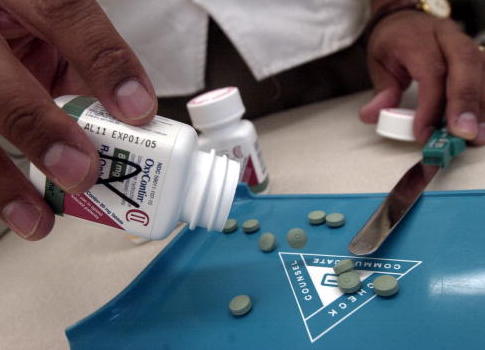Opioid medications do not perform significantly better than generic Tylenol for treating chronic back, hip, or knee pain, according to a study published Tuesday by the Journal of the American Medical Association.
The study sampled patients at Veterans Affairs primary care clinics who suffered from severe chronic back pain or hip or knee osteoarthritis pain. Participants were divided into two groups, with half receiving an opioid in the form of morphine, oxycodone, or hydrocodone, and the other half receiving generic acetaminophen or another nonsteroidal anti-inflammatory drug. Notably, the opioids prescribed were immediate-release, not extended-release like popular painkillers MSContin and OxyContin.
Having divided and prescribed their groups, the study's authors then followed their patients' experience of pain over the next twelve months. Using standard surveys, they measured patients' self-assessed ability to function with their pain, as well as the severity of their pain. Patients were also assessed for mental and physical health generally, including specific measures of depression, anxiety, sleep disturbance, sexual function, and fatigue.
Across the board, there was no significant difference between the opioid-treated group and the non-opioid group, including no statistically significant difference in either measures of ability to function with pain or severity of pain. The only benefit that opioid users saw was a significantly increased benefit to their measured anxiety, which the study's authors say comports with the existing understanding of opioids' effects. On the other hand, the opioid group also saw greater medication-related adverse symptoms—common side effects of regular opioid use can include dizziness, nausea, vomiting, and constipation.
The study's authors acknowledge some limitations to their sample. Because they drew from VA clinics, their sample was not necessarily representative of the overall population; most notably just 13 percent of their sample was female. Additionally, they note a prerandomization preference for opioid treatment, but suggest that this bias would lead to subjects over-reporting the benefits of opioids. These concerns, the study's authors say, are not enough to invalidate their overall conclusion.
"Treatment with opioids was not superior to treatment with nonopioid medications for improving pain-related function over 12 months," the study concludes. "Results do not support initiation of opioid therapy for moderate to severe chronic back pain or hip or knee osteoarthritis pain."
The new study is not the only one to scientifically question the efficacy of opioids for treating pain as compared against less addictive, dangerous painkillers. Another study, released last November by JAMA, found there was no significant difference between opioid and non-opioid painkillers when treating acute extremity pain in emergency room patients.
However, that study only covers the treatment of pain over a short period of time—around two hours—making it less useful for understanding opioids' usefulness for treating chronic pain. Indeed, the new study contributes to what is otherwise a minimal scientific literature on the use of opioids for treatment of chronic pain.
That lack of literature is significant given the prevalence of opioid prescription in the United States. The CDC reports that sales of prescriptions opioids nearly quadrupled between 1999 and 2014 — today, one in five Americans diagnosed with non-cancer pain or pain-related issues is prescribed an opioid.
This boom in prescription drugs may be traceable to a single note, published in the New England Journal of Medicine in 1980. As journalist Sam Quinones documented, numerous advocates for the use of opioids for chronic pain maintenance have alluded to the Porter and Jick letter (so-called for its authors), which showed essentially no addiction among patients given opioids in-hospital. As Quinones notes, this analysis—compiled from Porter's extensive notes but not based on any rigorous scientific study—does not account for the addiction rates of patients who are prescribed opioids for home use, as the overwhelming proportion of chronic pain patients who use opioids are.
The opioid boom, based as it is on limited scientific evidence, has had an enormous negative impact. Analysis from the CDC found that while heroin and fentanyl outpace prescribed opioids in terms of death rates, deaths from natural and semisynthetic opioids—which include usually prescribed opioids like oxycodone and hydrocodone—have quadrupled since 1999.
